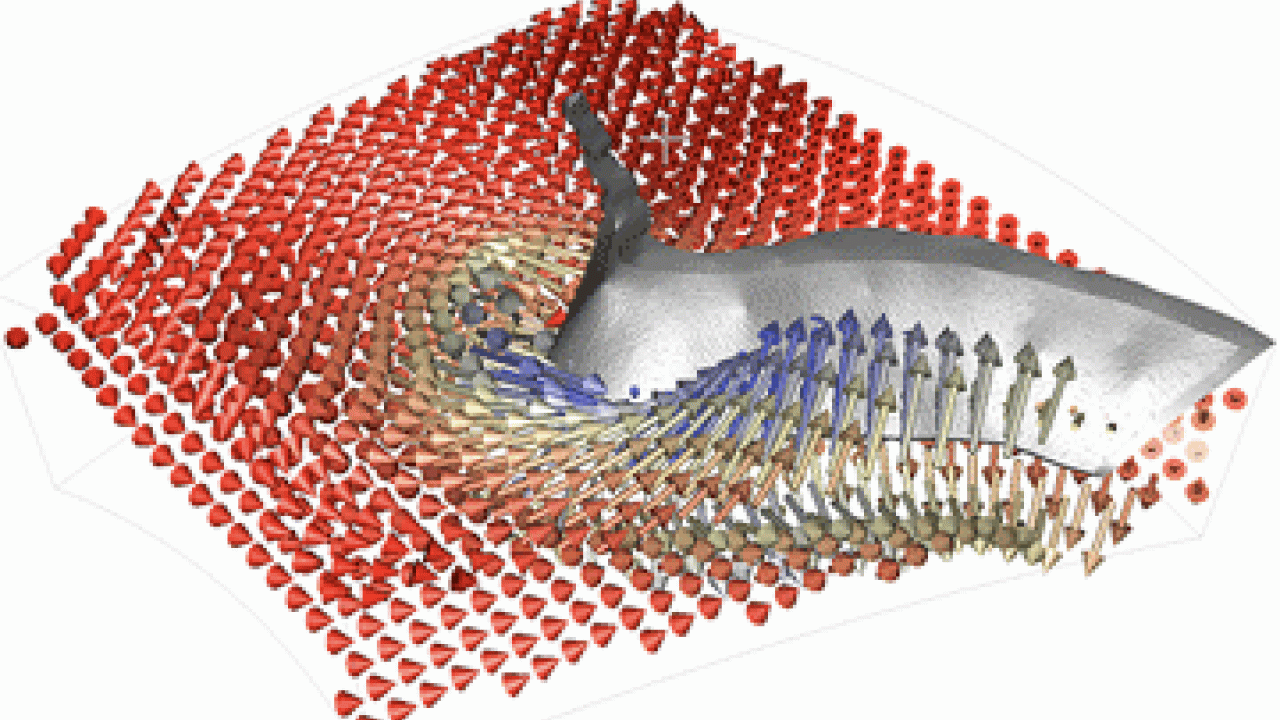The Earth's mantle flows far more rapidly around a sinking tectonic plate than previously thought, according to new computer modeling by UC Davis geologists. The findings could change the way that we think about plate tectonics and the amount of energy available for earthquakes. The results will be published May 20 in the journal Nature.
"Our model suggests that some parts of the mantle are moving at screaming speeds compared to what we can observe directly at the Earth's surface," said Magali Billen, associate professor of geology at UC Davis and co-author of the paper. "There is much more mixing and more rapid transport of heat in these regions of the Earth than we suspected."
Billen and graduate student Margarete Jadamec, now a postdoctoral researcher at Monash University in Australia, studied the Alaskan subduction zone, where the Pacific plate is diving beneath Alaska and pushing up Mt. McKinley.
To do so, they built the most detailed computer model to date of the plate and the surrounding mantle. The model revealed that rather than moving at roughly the same speed as the plate, the mantle was flowing much faster.
"We expected it to flow faster, but the surprise was that it is flowing 20 to 30 times faster," Billen said.
For geophysicists, that's as jarring as looking out your car window and estimating your speed at 10 miles an hour based on the passing scenery, then looking at the speedometer to find that you are doing 200 miles an hour, Billen said.
The Earth's surface is made of rocky plates floating on the mantle. Although solid, the mantle can flow under enormous pressure and temperature as individual grains are stretched. Where the surface plates meet, they may rub alongside each other or one may dive under the other and sink into the mantle, creating a subduction zone. As the plate sinks, it drags the mantle material along with it, Billen said.
Billen and Jadamec's model assumes that the viscosity of the mantle is not directly proportional to the stress on it. As stress increases, the mantle gets much less viscous and flows more easily.
The model raises questions about how movements in the mantle are connected to the movements of plates at the surface. One prediction is that there is more energy available in subduction zones to cause earthquakes than previously thought.
The model includes 100 million data points and takes 48 hours to run on a supercomputer with 400 processors. Billen and Jadamec ran their model on the Teragrid supercomputer at the Texas Advanced Computing Center, which is partly supported by the National Science Foundation.
The work was supported by the National Science Foundation.
About UC Davis
For more than 100 years, UC Davis has engaged in teaching, research and public service that matter to California and transform the world. Located close to the state capital, UC Davis has 32,000 students, an annual research budget that exceeds $600 million, a comprehensive health system and 13 specialized research centers. The university offers interdisciplinary graduate study and more than 100 undergraduate majors in four colleges — Agricultural and Environmental Sciences, Biological Sciences, Engineering, and Letters and Science. It also houses six professional schools — Education, Law, Management, Medicine, Veterinary Medicine and the Betty Irene Moore School of Nursing.
Media Resources
Andy Fell, Research news (emphasis: biological and physical sciences, and engineering), 530-752-4533, ahfell@ucdavis.edu
Magali Billen, Geology, 530-754-5696, mibillen@ucdavis.edu
